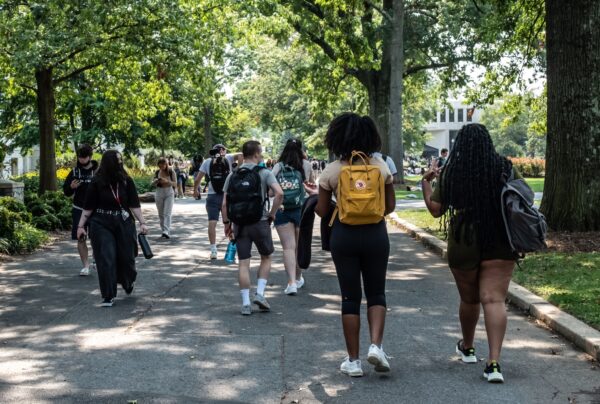By Ella Ceron and Claire Ballentine
Uncertainty over the fate of student loans is weighing on American borrowers hamstrung by inflation and an economic slowdown.
President Joe Biden’s administration is considering pushing the resumption of repayments to the end of this year, or even the start of next summer, Bloomberg News reported this week. That comes after previous White House comments saying Biden’s team was still weighing options for both a moratorium extension, as well as potentially forgiving $10,000 per borrower.

Repayments are currently slated to start in September, more than two years after former President Donald Trump implemented a freeze in March 2020 during the early days of the pandemic. The extension couldn’t come at a better time for borrowers, most of whom are confronting rising housing and gas prices, as well as a growing likelihood of a recession. Yet the whiplash of shifting dates has left them exhausted.
“As much as I’d love to see Biden move the deadline back again, it’s tiring to suddenly get anxious about repayment every few months,” said Maggie Mancini, a 28-year-old reporter in Philadelphia who has $28,400 in student loans. “Making a more permanent choice about student debt may be necessary because I’m tired of the run-around.”
A majority of the $1.7 trillion of student debt hanging over 45 million people in the US is held by the federal government, and Biden has faced pressure from Democratic lawmakers and advocacy groups to make good on campaign promises to forgive some of it. Yet the NAACP and the Congressional Black Caucus have urged the president to go beyond the $10,000 threshold to better relieve Black borrowers, who hold more debt than their White counterparts for longer and are more likely to default, according to the Brookings Institute.
The Congressional Hispanic Caucus has also met with Biden regarding debt forgiveness. “Our communities are counting on him to do the right thing,” said Representative Tony Cardenas, a Democrat representing parts of Southern California’s San Fernando Valley.
Can’t Compromise
For Mancini, the prospect of “adding another bill, no matter how much the monthly repayment would be, is anxiety-inducing.” She added that while she’s making more than she ever has, a sharp increase in food and housing costs leave her with barely enough to make ends meet every month.
“I don’t think I can compromise on either of those things to consistently make room for my student loan payment,” she said.
The repayment freeze is set to expire as rising prices weigh on workers, the majority of whom haven’t seen pay increases to offset inflation. While consumer prices are surging at the fastest pace in four decades, prompting the Federal Reserve to deliver the most aggressive policy tightening in more than a generation, real average hourly wages are falling by the most in at least 15 years.
Jelani Whitehorne, a 33-year-old data manager in Illinois, says he’s frustrated and disappointed that no action has been taken to forgive student loans broadly. His $15,000 in federal student loans are a constant burden hanging over him, especially now with heightened inflation.
“I’m in a better position than most, but it’s really going to be difficult,” he said.
The average student loan balance is $37,500, and one in three borrowers would likely see total loan forgiveness should Biden clear $10,000 in student loans. It’s possible that there could be a ceiling for such forgiveness so that only borrowers who made less than $125,000 or $150,000 last year, Bloomberg News reported.
Borrowers who did not finish college or attended a for-profit school are more likely to struggle with repayments than their counterparts who graduated or attended a private or nonprofit school, Fed data showed.
The payment freeze was the first time “in maybe eight years I could finally breathe a little bit again,” said Wendi Jo Hansen, a 35-year-old copywriter in Colorado with $65,000 in debt.
She added that she has been “living basically paycheck to paycheck to survive,” and if student loan payments resume, she’ll almost definitely have to pick up a second job to make ends meet — even after applying for the income-based repayment plan.
“The stop and go of things has been nerve-wracking,” Hansen said. “We get a light at the end of the tunnel, a reprieve, only for it to be taken away again. And then that process happens all over again. There’s a lot of uncertainty.”
More stories like this are available on bloomberg.com.




